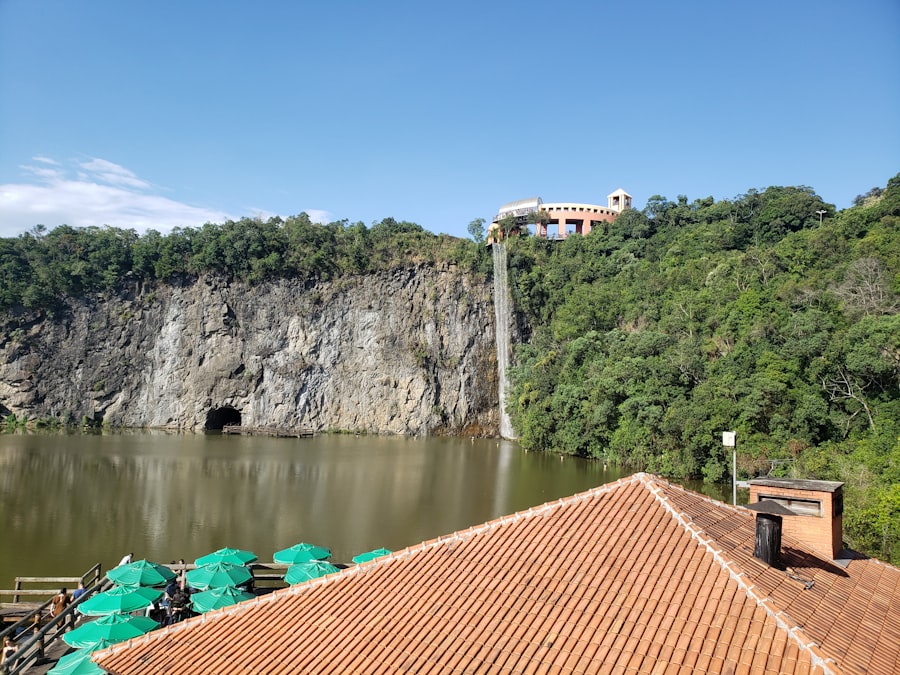
Malta, an archipelago nestled in the heart of the Mediterranean Sea, is a nation steeped in history and culture. Comprising three main islands—Malta, Gozo, and Comino—this small yet vibrant country boasts a rich tapestry of influences from various civilizations that have settled on its shores over millennia. The strategic location of Malta has made it a crossroads for trade and conquest, resulting in a unique blend of cultures that is reflected in its architecture, language, and traditions.
With a population of just over half a million, Malta is one of the world’s smallest countries, yet it is packed with an abundance of experiences waiting to be discovered. The Maltese archipelago is characterized by its stunning coastlines, crystal-clear waters, and a temperate Mediterranean climate that attracts visitors year-round. The islands are known for their historical significance, with numerous UNESCO World Heritage Sites, ancient temples, and fortifications that tell the story of their tumultuous past.
The official languages are Maltese and English, making it accessible for international travelers. Malta’s culinary scene is equally enticing, offering a fusion of Mediterranean flavors that reflect its diverse heritage. From fresh seafood to traditional pastries, the local cuisine is a delightful exploration of tastes and aromas.
Key Takeaways
- Malta is a small island nation in the Mediterranean with a rich history and vibrant culture.
- The historical and cultural highlights of Malta include ancient temples, medieval cities, and Baroque architecture.
- Must-see places and sights in Malta include the capital city of Valletta, the ancient city of Mdina, and the Blue Lagoon.
- Hidden gems in Malta include the Hypogeum, a prehistoric underground temple, and the Dingli Cliffs, offering stunning views of the Mediterranean.
- Outdoor activities and natural wonders in Malta include diving in crystal-clear waters, exploring the rugged coastline, and visiting the picturesque island of Gozo.
Historical and Cultural Highlights of Malta
Malta’s history is a fascinating chronicle of various civilizations that have left their mark on the islands. The earliest evidence of human habitation dates back to around 5200 BC, with the construction of megalithic temples such as those found at Ħaġar Qim and Mnajdra. These ancient structures are among the oldest free-standing buildings in the world and showcase the advanced architectural skills of the prehistoric inhabitants.
The temples are not only significant for their age but also for their intricate carvings and alignment with celestial events, indicating a sophisticated understanding of astronomy. The Phoenicians, Romans, Arabs, Knights of St. John, and British are just a few of the cultures that have influenced Malta’s development.
The Knights of St. John arrived in 1530 and transformed Malta into a fortified stronghold against Ottoman expansion. Their legacy is evident in the magnificent city of Valletta, which they founded in 1566.
Valletta is a UNESCO World Heritage Site and is renowned for its baroque architecture, including St. John’s Co-Cathedral, which houses Caravaggio’s masterpiece, “The Beheading of Saint John the Baptist.” The city’s rich history is further reflected in its museums, palaces, and fortifications that narrate the story of Malta’s resilience through centuries of conflict.
Must-See Places and Sights in Malta

When visiting Malta, there are several iconic sites that should not be missed. The capital city, Valletta, is a treasure trove of historical landmarks. The Grand Master’s Palace, once the residence of the Grand Masters of the Knights of St.
John, now serves as the office of the President of Malta and houses the Parliament. Visitors can explore its opulent rooms adorned with tapestries and armor while learning about the island’s governance and history. Another must-see is the ancient city of Mdina, often referred to as the “Silent City.” This fortified medieval town offers a glimpse into Malta’s past with its narrow winding streets and stunning architecture.
The Mdina Cathedral, dedicated to St. Paul, is a highlight with its impressive dome and richly decorated interior. The panoramic views from the city walls provide a breathtaking backdrop for photographs and an opportunity to appreciate the surrounding countryside.
The Blue Lagoon on Comino Island is another iconic destination known for its turquoise waters and stunning natural beauty. This idyllic spot is perfect for swimming, snorkeling, or simply relaxing on the beach. The nearby Santa Maria Tower offers a historical perspective as it was built by the Knights to guard against pirate attacks.
Visitors can take boat trips from Malta or Gozo to reach this picturesque location.
Hidden Gems: Lesser-Known Attractions in Malta
| Attraction | Location | Description |
|---|---|---|
| Blue Grotto | Wied iz-Zurrieq | A series of sea caverns on the south coast of Malta, known for its crystal-clear waters and stunning natural rock formations. |
| Popeye Village | Mellieħa | A film set village from the 1980 musical production ‘Popeye’, now a popular tourist attraction with its colorful buildings and entertainment options. |
| Għar Dalam Cave and Museum | Birżebbuġa | An important prehistoric site containing animal bones and artifacts dating back to the Ice Age, as well as a museum showcasing Malta’s geological and biological history. |
| St. Agatha’s Tower | Mellieħa | Also known as the Red Tower, this 17th-century coastal fort offers panoramic views of the surrounding countryside and sea. |
While Malta is famous for its well-trodden tourist paths, there are numerous hidden gems waiting to be explored. One such place is the village of Marsaxlokk, known for its colorful fishing boats called “luzzu.” This charming fishing village offers a glimpse into traditional Maltese life and is particularly vibrant during the Sunday fish market when locals sell their fresh catch. Visitors can enjoy a leisurely meal at one of the waterfront restaurants while savoring local seafood dishes.
Another lesser-known attraction is the Ħaġar Qim Temples, located on a hilltop overlooking the sea. While many tourists flock to the more famous sites, Ħaġar Qim offers a quieter experience where visitors can appreciate the ancient stone structures without the crowds. The site features impressive megaliths and altars that date back to around 3600 BC, providing insight into Malta’s prehistoric culture.
The coastal cliffs at Dingli are also worth exploring for those seeking tranquility away from bustling tourist areas. This natural wonder offers breathtaking views of the Mediterranean Sea and is an ideal spot for hiking or picnicking.
Mary Magdalene adds a spiritual touch to this serene landscape.
Outdoor Activities and Natural Wonders in Malta
Malta’s diverse landscape provides ample opportunities for outdoor enthusiasts to engage in various activities. The islands are renowned for their excellent diving spots, with crystal-clear waters teeming with marine life. Popular dive sites include the Blue Hole in Gozo and the wreck of the HMS Maori near Valletta.
These underwater adventures allow divers to explore vibrant coral reefs and encounter an array of fish species. For those who prefer land-based activities, hiking along the coastal paths offers stunning views and a chance to connect with nature. The coastal cliffs at Dingli provide some of the most breathtaking panoramas on the island, while trails around Gozo lead to secluded beaches and hidden coves.
The scenic countryside is dotted with wildflowers in springtime, making it an ideal time for nature walks. Cycling is another popular way to explore Malta’s landscapes. Several bike rental shops offer guided tours or self-guided routes that take cyclists through charming villages and along coastal roads.
The relatively small size of the islands makes cycling an accessible option for visitors looking to experience Malta at their own pace.
Practical Tips for Visiting Malta

When planning a trip to Malta, there are several practical considerations to keep in mind to ensure a smooth experience. First and foremost, understanding the local transportation system can greatly enhance your visit. Malta has an extensive bus network that connects major towns and attractions, making it easy to navigate without a car.
However, renting a car can provide greater flexibility for exploring remote areas or hidden gems. The best time to visit Malta is during the spring (April to June) or fall (September to October) when temperatures are pleasant and crowds are fewer. Summer months can be quite hot, with temperatures often exceeding 30°C (86°F), making outdoor activities more challenging during peak hours.
Additionally, booking accommodations in advance is advisable during peak tourist seasons to secure better rates and availability. Cultural etiquette is also important when visiting Malta. While English is widely spoken, learning a few basic phrases in Maltese can go a long way in connecting with locals.
Respecting local customs and traditions will enhance your experience; for instance, dressing modestly when visiting churches or religious sites is appreciated. Lastly, indulging in local cuisine should be high on your list of priorities while in Malta. Trying traditional dishes such as rabbit stew (fenek), pastizzi (savory pastries), and local wines will provide insight into Maltese culture and culinary heritage.
Exploring local markets can also be an enjoyable way to sample fresh produce and artisanal products while interacting with friendly vendors. In summary, Malta offers an enchanting blend of history, culture, natural beauty, and outdoor adventure that captivates visitors from around the globe. Whether you are wandering through ancient cities or relaxing on sun-kissed beaches, this Mediterranean gem promises an unforgettable experience filled with discovery and delight.
If you’re intrigued by the diverse and rich cultural heritage of Malta, you might also enjoy exploring similar insights about another captivating destination. Check out this related article on Dominica Facts and Places to Visit. Like Malta, Dominica offers a unique blend of natural beauty and historical sites, providing a deep dive into its own unique traditions and landscapes. Whether you’re a history buff or a nature enthusiast, this article will enrich your understanding of what makes Dominica a must-visit location.
FAQs
What are some interesting facts about Malta?
– Malta is one of the smallest countries in the world, with a total land area of just 316 square kilometers.
– The official languages of Malta are Maltese and English.
– Malta has a rich history, with evidence of human habitation dating back to around 5200 BC.
– The capital city of Malta is Valletta, which is also a UNESCO World Heritage site.
– Malta is known for its beautiful beaches, clear blue waters, and stunning natural landscapes.
What are some popular places to visit in Malta?
– The ancient city of Mdina, also known as the “Silent City,” is a popular tourist destination with its narrow streets and medieval architecture.
– The Blue Lagoon, located on the small island of Comino, is a must-visit for its crystal-clear waters and picturesque surroundings.
– The megalithic temples of Malta, such as Ħaġar Qim and Mnajdra, are some of the oldest free-standing structures in the world and are UNESCO World Heritage sites.
– St. John’s Co-Cathedral in Valletta is a stunning example of Baroque architecture and is home to Caravaggio’s masterpiece, “The Beheading of Saint John the Baptist.”
What are some must-see sights in Malta?
– The Azure Window, a natural limestone arch on the island of Gozo, was a popular tourist attraction before it collapsed in 2017.
– The Three Cities, consisting of Vittoriosa, Senglea, and Cospicua, offer a glimpse into Malta’s maritime history and are filled with historic buildings and fortifications.
– The Hypogeum of Ħal-Saflieni is an underground burial site dating back to around 4000 BC and is a UNESCO World Heritage site.
– The Upper Barrakka Gardens in Valletta offer panoramic views of the Grand Harbour and are a peaceful retreat in the heart of the city.



